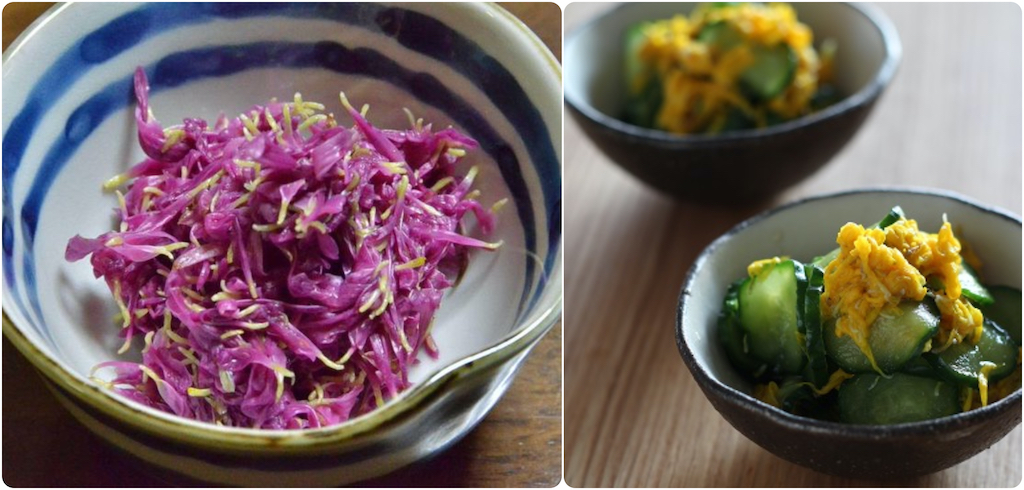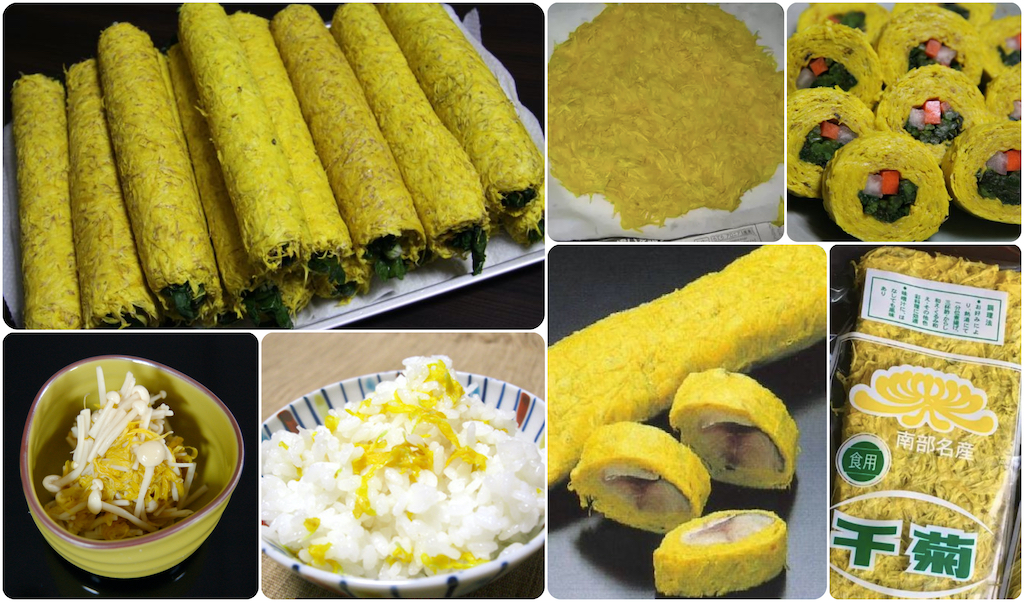
食用菊 Shokuyō Kiku
Edible chrysanthemums are one Japan’s autumnal culinary delights. Commercially cultivated in various parts of Japan today (including Okinawa!) they were traditionally enjoyed in the Tohoku (Akita, Yamagata) and Hokuriku (Niigata) regions. Though consumed in relatively small quantities, flowers are typically rich in vitamins A and C.
In western kitchens edible marigolds (Calendula officinalis), nasturtiums (Tropaeolum majus), and primroses (Primula vulgaris) are often enjoyed as food and these flowers maybe easier to source outside Japan than shoku yō kiku (Chrysanthemum coronarium). If you are having trouble sourcing fresh or dried flowers in your community, I suggest you check your local Korean and Chinese markets, too, since Japan is not the only Asian food culture to cook with chrysanthemums.
DOWNLOAD recipes for KIKU NAMASU (pickled chrysanthemum petals) and Cucumber and Chrysanthemum salad.
NOTE: Most flowers are ornamental, used for decorative display. Do NOT consume flowers from a florist’s display since these are typically grown with the assistance of various chemicals that can be toxic.

干し菊 Hoshi-Giku
In addition to fresh floweers, the Japanese steam and dry edible chrysanthemums, pressing them into sheets to extend their shelf life. Most packages of hoshi-giku have a shelf life of 2 or more years though the color and fresh aroma of the flowers fades after several months.
The sheets are used in much the same way that sheets of nori are, to wrap sushi and other foods. Cured mackeral sushi (shimé saba-zushi) is especially delicious wound in sheets of dried chrysanthemums.
Often the sheets of dried chrysanthemums will “shed” petals. Collect, and save these for tossing into rice, floating in broths (or cups of sake) or scattering on other foods. The sheets can also be torn and shredded purposefully and used in making salads such as Chrysanthemum and Enoki Mushroom Salad dressed in a light vinaigrette.
I have created a reference sheet regarding EDIBLE VARIETIES of chrysanthemums. For additional informatiion and inspiration on cooking with chrysanthemums, visit PROJECT Chrysanthemum.
DOWNLOAD a copy of my November 2021 newsletter about chrysanthemums.




